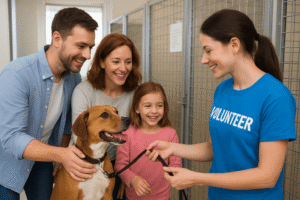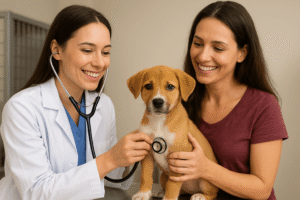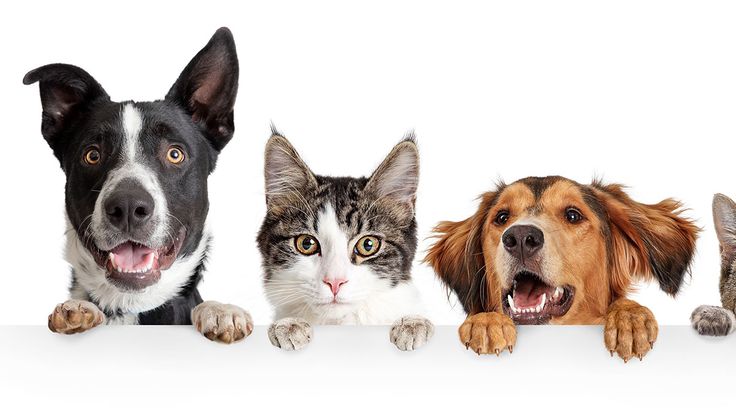Adopt a Pet Today 2025 – Ultimate Step-by-Step Guide for Pet Lovers
Each year, countless animals in shelters patiently wait for the love and security of a new family. Choosing to adopt a pet is not just a kind gesture—it’s a life-changing decision for both you and the animal. Unlike buying, adoption helps reduce overpopulation, saves lives, and brings joy to your home. This comprehensive guide explores why adoption matters, how the process works, and how you can provide the best life for your furry friend.

1. Why Adopt a Pet Instead of Buying?
When you adopt, you’re giving an abandoned or homeless animal a second chance. Buying pets from breeders or pet shops often supports overbreeding and, in some cases, cruel practices like puppy mills. Adoption is ethical, affordable, and deeply rewarding.
Key Benefits of Adoption:
- Saving Lives: Millions of dogs and cats are euthanized each year due to overcrowding. Your adoption saves a life.
- Cost-Effective: Adoption fees are lower than breeder prices and usually include vaccinations, microchipping, and spaying/neutering.
- Diverse Choices: Shelters have puppies, kittens, adults, and even exotic pets waiting for homes.
- Adopted pets: Often form deep connections, showing remarkable loyalty and appreciation.
2. Understanding the Pet Adoption Process
Many people hesitate to adopt because they’re unsure how it works. The truth? It’s easier than you think.
- Research Shelters or Rescue Groups – Look for reputable organizations in your city.
- Meet Potential Pets – Visit the shelter to interact with animals and find a good match.
- Application & Screening – Most shelters check your lifestyle, home environment, and past pet history.
- The adoption fee – Generally includes essentials like vaccinations, sterilization, and basic veterinary care.
- Bringing Your Pet Home – Prepare a safe space, food, toys, and essentials before arrival.
3. Choosing the Right Pet for Your Lifestyle
Adoption is not one-size-fits-all. Every pet has unique needs, and you must choose one that matches your lifestyle.
Questions to Ask Yourself:
- Do I want an energetic dog for outdoor activities or a calm cat for companionship?
- How much time can I dedicate to daily walks, feeding, and playtime?
- Do I live in an apartment or a spacious house with a yard?
- Can I manage grooming and vet care costs?
Popular Options:
- Dogs: Great companions, active, protective, loyal.
- Cats: Independent, affectionate, lower maintenance.
- Rabbits: Gentle, quiet, and great for smaller homes.
- Birds: Social, intelligent, and colorful.
- Senior Pets: Often overlooked but bring calmness and unconditional love.
4. Preparing Your Home for a New Pet
Before you bring home your adopted pet, ensure your space is safe and welcoming.
- Pet-Proofing: Remove toxic plants, secure electrical cords, and lock cabinets.
- Sleeping Area: Create a cozy bed or crate in a quiet space.
- Feeding Station: Provide fresh food and water bowls.
- Toys & Enrichment: Chew toys, scratching posts, or interactive games prevent boredom.
- Vet Appointment: Schedule a checkup within the first week.
5. Health & Nutrition for Adopted Pets
A well-fed pet is a happy pet. After adopt a Pet, consult your vet to establish a proper diet plan.
- Dogs: Balanced diet of protein, carbs, and healthy fats.
- Cats: High-protein, taurine-rich diets.
- Small Pets: Rabbits need hay and veggies; birds require seeds and fresh fruit.
- Depending on age and breed: Pets may benefit from added support such as probiotics, omega-3 fatty acids, or vitamins.

6. Training and Socialization After Adoption
Adopted pets may come with past trauma or lack training. Patience and consistency are key.
Training Tips:
- Use positive reinforcement with treats and praise.
- Start with basic commands: sit, stay, come.
- Socialize with other pets and people gradually.
- Avoid punishment—it can worsen fear and aggression.
Many shelters offer free or discounted training classes, so take advantage of them.
7. The Emotional Benefits of Pet Adoption
Bringing an adopted pet into your life not only rescues them but also enriches your own well-being. Research shows pet ownership reduces stress, lowers blood pressure, and increases happiness. Children who grow up with adopted pets learn empathy, kindness, and responsibility.
8. Myths About Pet Adoption (Debunked)
- “Adopted pets have behavior problems.”
Reality: Most are abandoned due to financial or lifestyle changes, not behavior. - “Shelter pets are unhealthy.”
Most shelters ensure animals receive vital health checkups and vaccinations before they are ready for adoption. - “You can’t find purebreds in shelters.”
Reality: About 25% of shelter dogs are purebred.
9. Long-Term Care for Adopted Pets
Adoption is a lifelong commitment. Here’s how to ensure your pet thrives:
- Regular Vet Visits – Preventive care keeps pets healthy.
- Exercise & Playtime – Essential for mental and physical well-being.
- Love & Patience – Adopted pets may take time to adjust.
- Identification – Microchip and collar tags are crucial for safety.
- Routine & Stability – Pets feel secure when their environment is predictable.
10. Where to Adopt a Pet
- Local Animal Shelters
- Non-Profit Rescue Groups
- Foster Networks
- Adoption Events at pet stores or community centers
Websites like Petfinder, Adopt-a-Pet, and ASPCA can also help you find pets online.
11. Adopt a Pet: Emotional Healing for Humans and Animals
Adoption goes beyond simply bringing a pet home—it’s a journey of emotional healing for both the animal and the adopter. Many pets enter shelters after experiencing neglect, abandonment, or trauma. Similarly, many people who adopt have emotional needs—loneliness, stress, or a desire for companionship.
For Humans:
- Provides companionship, reducing depression and anxiety.
- Creates a sense of purpose and responsibility.
- Encourages physical activity through walks and playtime.
- Strengthens social bonds, as pets spark conversations and friendships.
For Pets:
- They experience love, security, and stability.
- Fear and anxiety decrease in safe homes.
- They regain trust in humans.
- Rescued pets frequently build strong, lasting bonds filled with loyalty and affection toward their new families.
This mutual healing is one of the most beautiful outcomes of pet adoption.

12. The Economics of Pet Adoption
Choosing adoption is often more cost-effective than purchasing from breeders or pet stores, while still ensuring a healthy companion.
Adoption Costs:
- Adoption Fees: $50–$300 depending on the pet and shelter.
- Included Services: Vaccinations, microchipping, spaying/neutering, and sometimes starter kits.
Buying Costs:
- Purebred dogs and cats from breeders can cost anywhere from $500 to $5,000.
- Additional costs for medical care, spaying/neutering, and vaccinations are extra.
Adoption not only saves lives but also saves money—making it a smart, ethical, and economical choice.
13. Pet Adoption and Children: Building Lifelong Values
When families adopt a pet, children gain more than just a playmate. They learn empathy, patience, and compassion. Kids who grow up with pets are often more responsible and emotionally intelligent.
Benefits for Children:
- Responsibility: Feeding, grooming, and walking a pet teaches accountability.
- Compassion: Caring for an animal fosters kindness and empathy.
- Emotional Stability: Pets provide comfort during stressful times.
- Confidence: Training and bonding with a pet builds self-esteem.
In fact, psychologists recommend pets for children struggling with anxiety or social issues.
14. Challenges of Adopting a Pet (and How to Overcome Them)
Adoption is rewarding, but it’s not without challenges. Recognizing them helps you prepare better.
Common Challenges:
- Adjustment Period: Pets may take time to trust new people.
Solution: Be patient, provide stability, and use gentle training. - Behavioral Issues: Some pets have separation anxiety, chewing habits, or fear responses.
Solution: Seek professional training and use positive reinforcement. - Health Concerns: Rescue pets may have pre-existing medical conditions.
Solution: Schedule regular vet visits and follow a health plan. - Time Commitment: Pets need daily care, exercise, and attention.
Tip: Before adopting, make sure your daily routine and lifestyle align with the pet’s specific needs.
Overcoming these challenges strengthens your bond and makes adoption more meaningful.
15. Adopting Special-Needs Pets
Adopt a pet one of the most compassionate forms of adoption is choosing a pet with special needs—whether it’s a disability, chronic illness, or old age.
Why Adopt a Special-Needs Pet?
- They are often overlooked in shelters.
- They show immense gratitude and affection.
- Caring for them can be deeply fulfilling.
Types of Special-Needs Pets:
- Senior Dogs & Cats: Calmer, affectionate, less demanding.
- Disabled Pets: Blind, deaf, or with mobility issues—many adapt surprisingly well.
- Medical Needs: Pets with conditions like diabetes or allergies.
Adopting such pets proves that love goes beyond appearances or challenges.

16. The Global Impact of Pet Adoption
Adopting a pet has ripple effects across society:
- Reduces Shelter Overcrowding: Fewer animals face euthanasia.
- Decreases Stray Populations: Adoption discourages abandonment.
- Promotes Responsible Ownership: Adoption campaigns raise awareness.
- Environmental Impact: Fewer resources are wasted on overbreeding.
By adopting, you contribute to a more humane and sustainable world.
17. Stories of Transformation: Real-Life Adoption Tales
Every adoption is a story of love and redemption.
- Bella the Beagle: Found abandoned on the streets, Bella was adopted by a retired teacher. Today, she’s a certified therapy dog visiting hospitals.
- Max the Cat: Rescued from a hoarding situation, Max was timid. With patience, his adoptive family helped him blossom into a cuddly lap cat.
- Shadow the Labrador : was once left chained in harsh conditions, but his life changed forever when a loving couple welcomed him into their home. Now he enjoys hiking trips and family adventures.
Such stories remind us that every adoption is a second chance at happiness.
18. How to Spread Awareness About Pet Adoption
You don’t have to adopt to make a difference—supporting shelters or spreading awareness still helps save lives.
- Foster a Pet: Temporary homes save lives.
- Volunteer at Shelters: Help with cleaning, feeding, or walking dogs.
- Donate: Money, food, toys, or blankets.
- Advocate: Share adoption stories on social media using hashtags like #AdoptDontShop.
- Educate Others: Encourage friends and family to adopt instead of buying.
Every small action counts toward creating a better world for animals.
19. Future of Pet Adoption: Trends and Innovations
The pet adoption landscape is evolving with technology and social movements.
- Online Adoption Platforms: Websites like Petfinder and Adopt-a-Pet make searching easy.
- Virtual Meet-and-Greets: Video calls allow adopters to meet pets remotely.
- DNA Testing: Helps match pets with suitable homes based on breed traits.
- Global Awareness Campaigns: Social media has amplified the “Adopt, Don’t Shop” message.
As technology grows, the hope is that no pet will ever be left homeless.
Conclusion: The Gift of Adoption
When you adopt a pet, you’re not just gaining a companion—you’re giving an animal a new chance at life. From the joy of companionship to the health benefits for both you and your pet, adoption creates a bond built on love, trust, and gratitude.
So, instead of shopping for a pet, choose adoption. Your decision can save lives, change futures, and fill your home with unconditional love.

